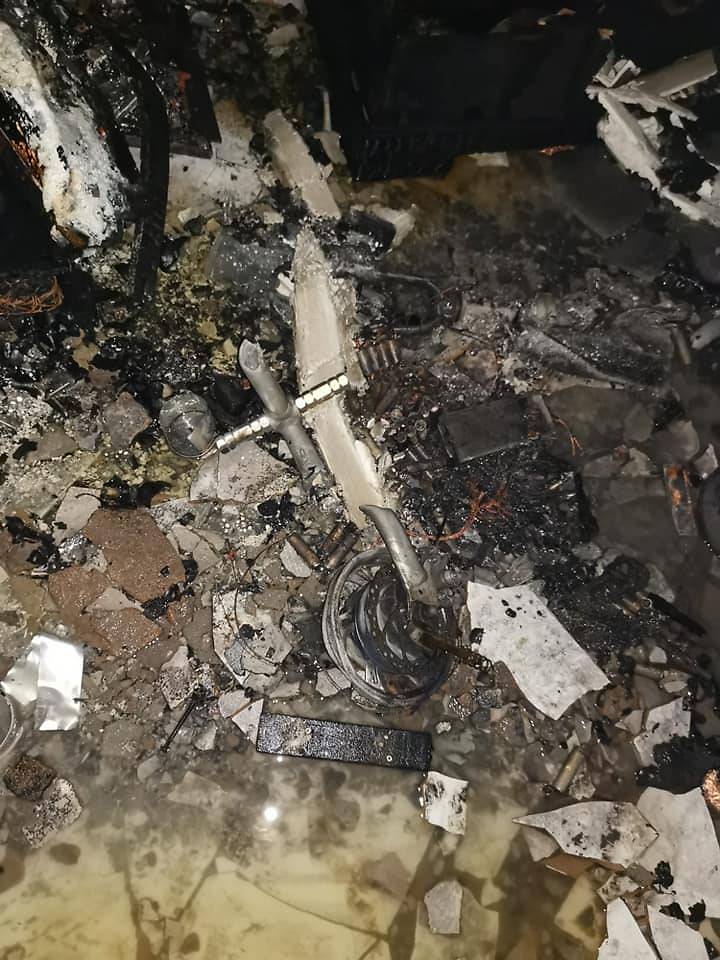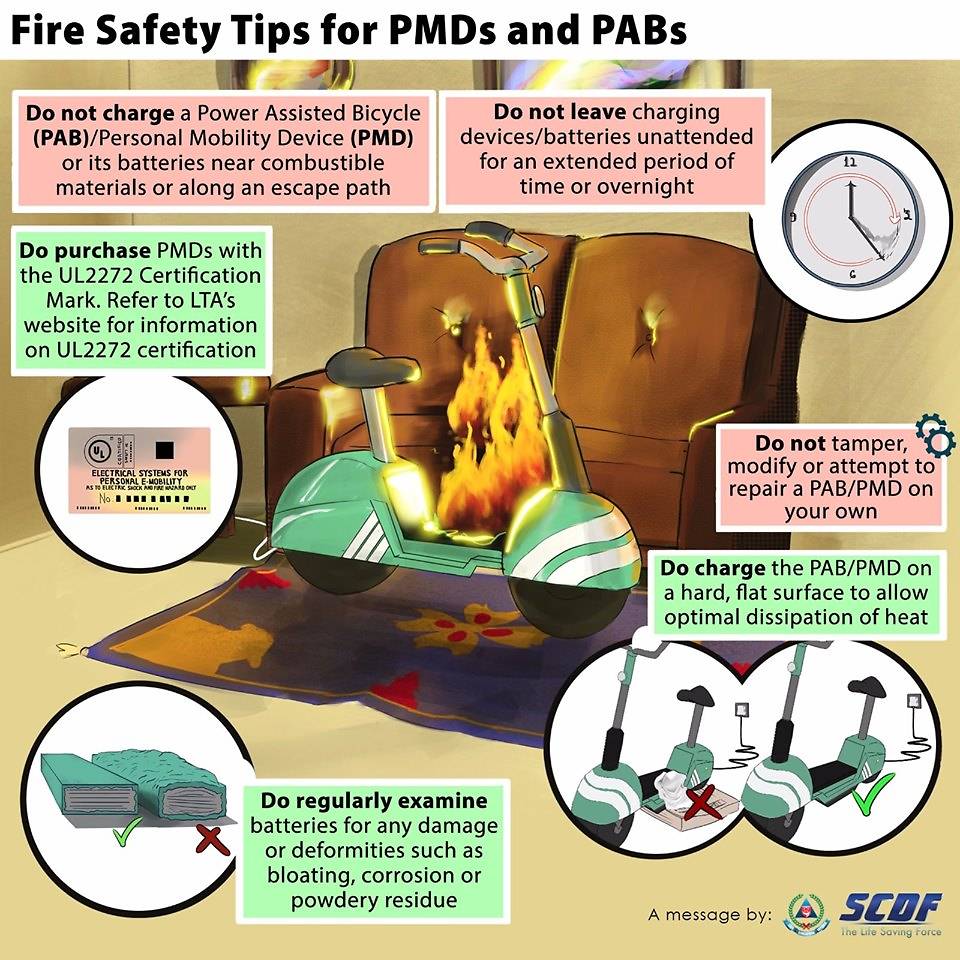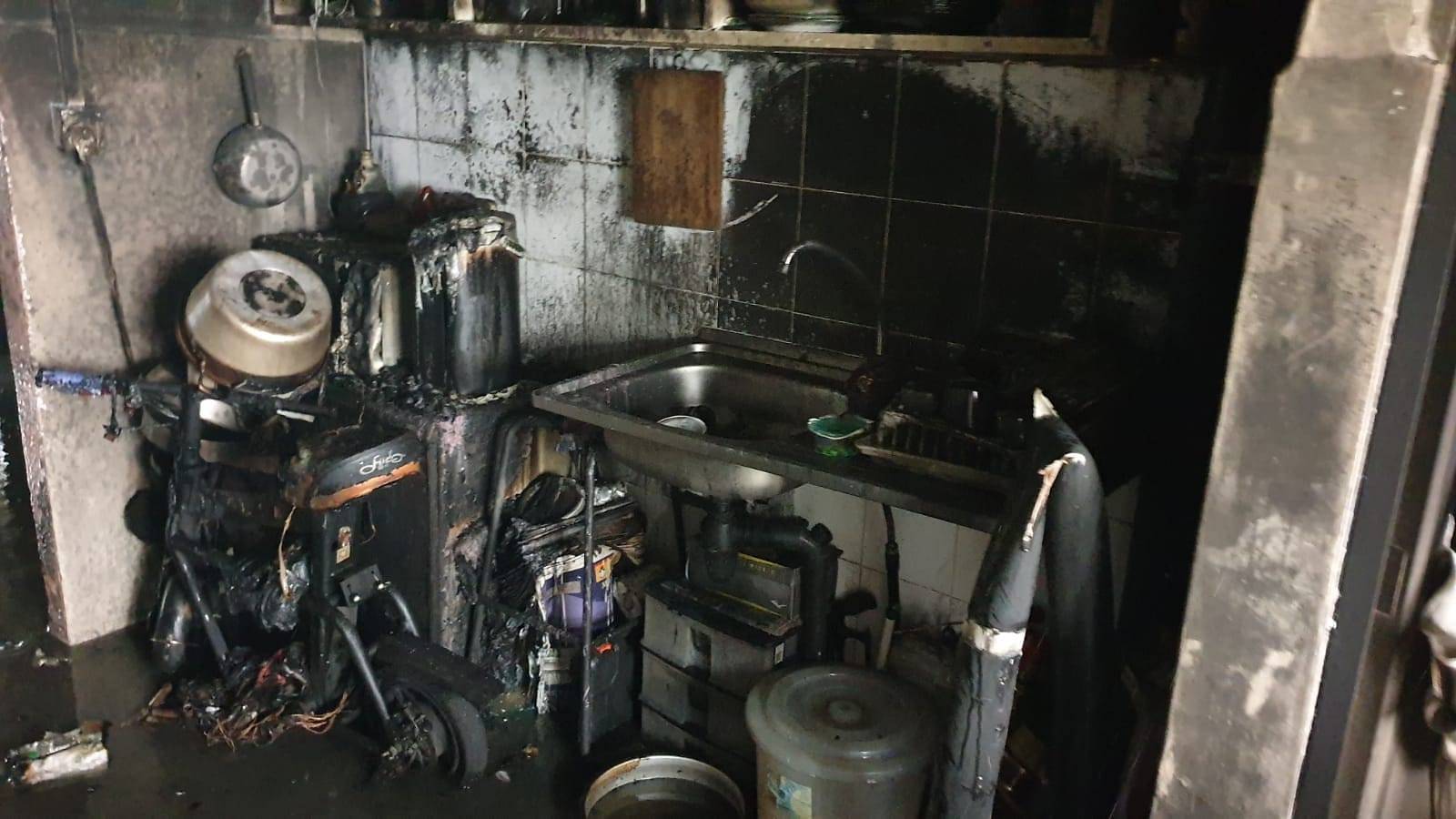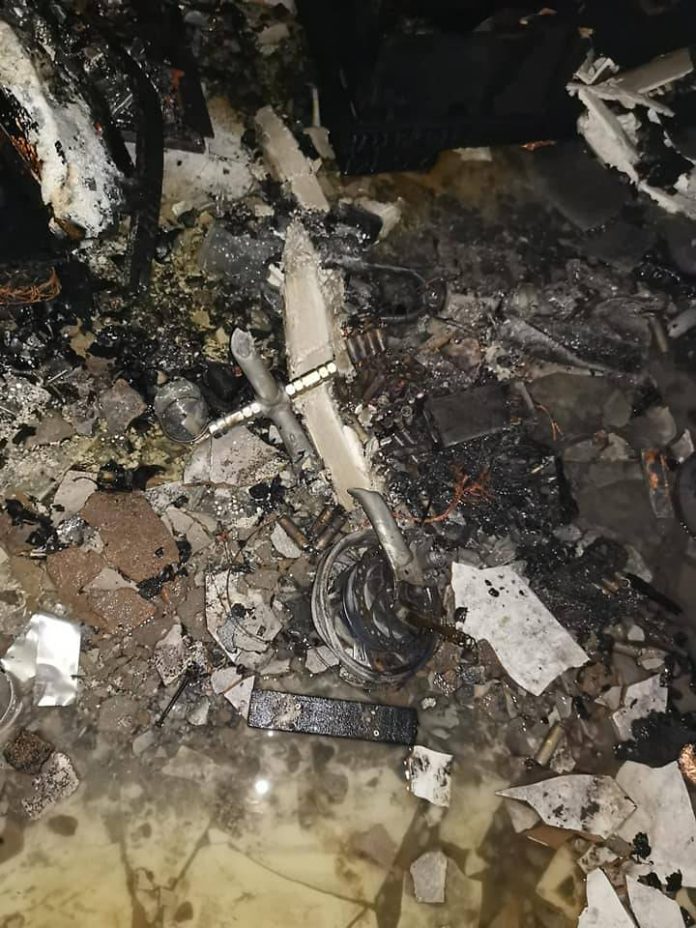SINGAPORE: How can you charge your personal mobility device (PMD) safely without setting your house on fire? With the rise in the use of PMDs such as electric scooters, the number of fires caused by such devices has also grown.
A PMD placed in the kitchen of an Ang Mo Kio flat likely sparked a fire causing about 60 people to be evacuated on Monday (Jul 22). The blaze was the latest in a string of recent PMD-related fires, one of which claimed the life of a 40-year-old man just last week.
Here are some tips to prevent PMD-related fires:
IS YOUR PMD SAFE?
As PMDs have only started gaining popularity in recent years, many motorised PMDs used in Singapore do not conform to any reliable safety standards.
To prevent the PMD-related fires, SCDF advises the public to use and purchase PMDs certified with the UL2272 fire safety certification.
READ: Fires involving e-scooters, e-bikes spike by 50% in 2018
According to the Land Transport Authority (LTA), getting a UL2272 certification requires the PMD to pass a series of electrical, mechanical and environmental tests.
To be UL2272 certified, each PMD must have a certification mark, samples of which can be seen on LTA’s website.

The charred remains of a PMD in a Tampines HDB flat fire. (Photo: Facebook/SCDF)
According to LTA, all PMDs used on public paths must be UL2272 certified from Jan 1, 2021, so if you are the owner of a non-UL2272 PMD, you might want to switch PMDs soon anyway.
More information on the UL2272 standard can be found on the LTA website.
CHECK FOR DAMAGE
According to the SCDF, there were a total of 74 fires involving PMDs and Power-Assisted Bicycles (PABs) in 2018. Most of these involved lithium-ion batteries and occurred during charging or shortly after.
READ: How your lithium-ion battery could be an explosive danger
Before you attempt to charge your PMD, it is advised to check the batteries for any damage or deformities such as bloated or corroded batteries or powdery residue. Such deformities indicate a damaged battery, which may lead to overheating and therefore fires.
WHEN CHARGING
Electrical devices build up heat when they are charged and PMDs are no exception. Too much heat increases the risk of damage to your device in addition to running the risk of fire.
Therefore, you should ensure that your PMD can dissipate heat effectively while charging.
This can be done by:
- Charging the PMD in a cool room or shaded area away from heat sources
- Placing it on hard, open and flat surfaces
- Not placing it near combustible materials
- Not covering the PMD with fabric
In addition, it’s best not to charge the batteries immediately after riding the PMD. PMD batteries get hot when used and would need some time to cool down after use.
They should also not be placed near an exit in the way of your escape, in the case of a fire.

Fire safety tips on preventing PMD fires. (Graphic: Facebook/SCDF)
AVOID OVERCHARGING
Some PMD fires started because the batteries were left charging overnight. According to SCDF, some models of batteries do not come with an automatic power cut-off function.
As such, you shouldn’t charge an already fully-charged battery or to leave it charging overnight. PMD users are also advised to follow the manufacturers’ instructions for charging their devices.
STORING BATTERIES PROPERLY
PMD batteries run the risk of catching fire when overheated. The PMD battery should be stored at room temperature away from combustible or flammable materials.
Are you storing your PMD in a kitchen? Exposure to heat sources should be minimised, so move it away from that stove or oven.

A personal mobility device (PMD) that was placed in the kitchen was the cause of the fire in Ang Mo Kio on Jul 22, 2019, according to preliminary investigations. (Photo: Facebook/SCDF)
Also, SCDF advises users to tape up the charging terminals of batteries if they are not going to be used for a long time.
OTHER TIPS
Here are some other suggestions to minimise PMD fires:
When purchasing your PMD, make sure to do from reputable sources and brands. Cheaper, no-name brands may skimp on the quality of parts and therefore compromise safety. As mentioned above, make sure it is UL2272 certified.
When charging the PMD, use valid adaptors with current, voltage and wattage ratings compatible with the device.
Also, do not tamper with, modify or attempt to repair your PMD on your own. If damaged, it is better to send the PMD for repair by a qualified serviceman.





